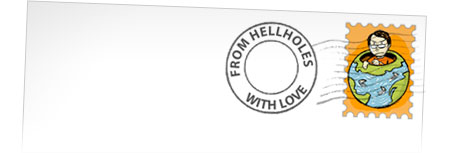Mr. Brooks Goes to Afghanistan
How community-led humanitarian programs really work.

Shortly before President Obama announced his new Afghanistan policy, NATO forces organized a tour for several U.S. journalists. One of the writers on the six-day visit was New York Times columnist David Brooks.
Brooks published two articles with datelines from the trip—on March 24 from "Wardak Province" and on March 27 from "Khyber Pass"—and they contradict each other in their assessments of civilian humanitarian assistance provided by what Brooks calls "Western aid agencies." This inconsistency caught my eye, because I work for one such agency, the International Rescue Committee.
In the March 24 piece, Brooks said nice things about community-based development programs in which local recipients are assisted by humanitarian organizations. He wrote, "Under the National Solidarity [Program], villages elect Community Development Councils. Western aid agencies give the councils up to $60,000 to do local projects, but it's not the projects that matter most. It's the creation of formal community structures."
This is very positive and almost correct: The funds are given to the communities not by "Western aid agencies" but by the World Bank, the European Union, and 14 foreign governments via the Afghan Ministry of Rural Rehabilitation and Development. The aid agencies (not all are "Western"—some are "international," some "Eastern," and some local) help organize elections to form the councils, help design the projects, help open bank accounts, and help carry out the projects. We are known as "facilitating partners."
Brooks writes approvingly that "[t]hese projects are up and running in 23,000 villages." In 1,475 of these communities, IRC was, or still is, the facilitating partner, and since the beginning of the program six years ago, the organization has reached some 1.75 million Afghans.
Why, then, having praised this program, did Brooks three days later launch a sneak attack on "Western aid workers," ostensibly the same ones he liked so much when he wrote from Wardak?
This is what Brooks wrote from Khyber Pass: "Western aid workers seem to spend most of their time drawing up flow charts for each other. ... [T]hey can't really immerse themselves in the messy world of local reality. They insist on making most of the spending decisions themselves so the 'recipients' of their largess end up passive, dependent and resentful."
This is gratuitous and untrue as far as IRC goes, and I am sure that my colleagues working at other facilitating partners and in other nongovernmental organizations were as surprised as I was by the harsh tone.
Giving Brooks the benefit of the doubt, I choose to blame his sniping on confusion rather than malice or ignorance. To convince him of the utility of some flow charts, I propose a more Rube Goldberg approach to the community-based development programs that he seems to simultaneously love and hate. Brooks will understand that the recipients of the funds (the "largess" is not ours, though—we owe it to the above-mentioned donors) simply cannot be "passive, dependent and resentful," because they are the ones who are making the spending decisions.
To help David Brooks and everyone else grasp the basics of humanitarian aid being channeled by NGOs—something that may happen more and more since President Obama announced that greater civilian assistance is part of his new strategy in the region—I offer as an example a graphic representation of the International Rescue Committee's programs in Afghanistan.
With 20 years of experience in the country, IRC is among the most knowledgeable groups on the ground, and with 481 employees (all but nine of them Afghan), we are one of the largest NGOs working in Afghanistan. We need not worry about immersing ourselves "in the messy world of the local reality" because we are the local reality, and alas—as everyone from Obama to Brooks knows—it is a messy world indeed.
If we do not implement more programs in Afghanistan, it is because the security situation prevents it, not because drawing flow charts keeps us away from the needy.
So, let us move to the flow chart, which explains how community-led humanitarian programs operate in Afghanistan. (Click the arrows to make the chart expand.) And below the chart is a map showing what kind of aid work is done by IRC in Afghanistan, and where it is done.
. Map PDF